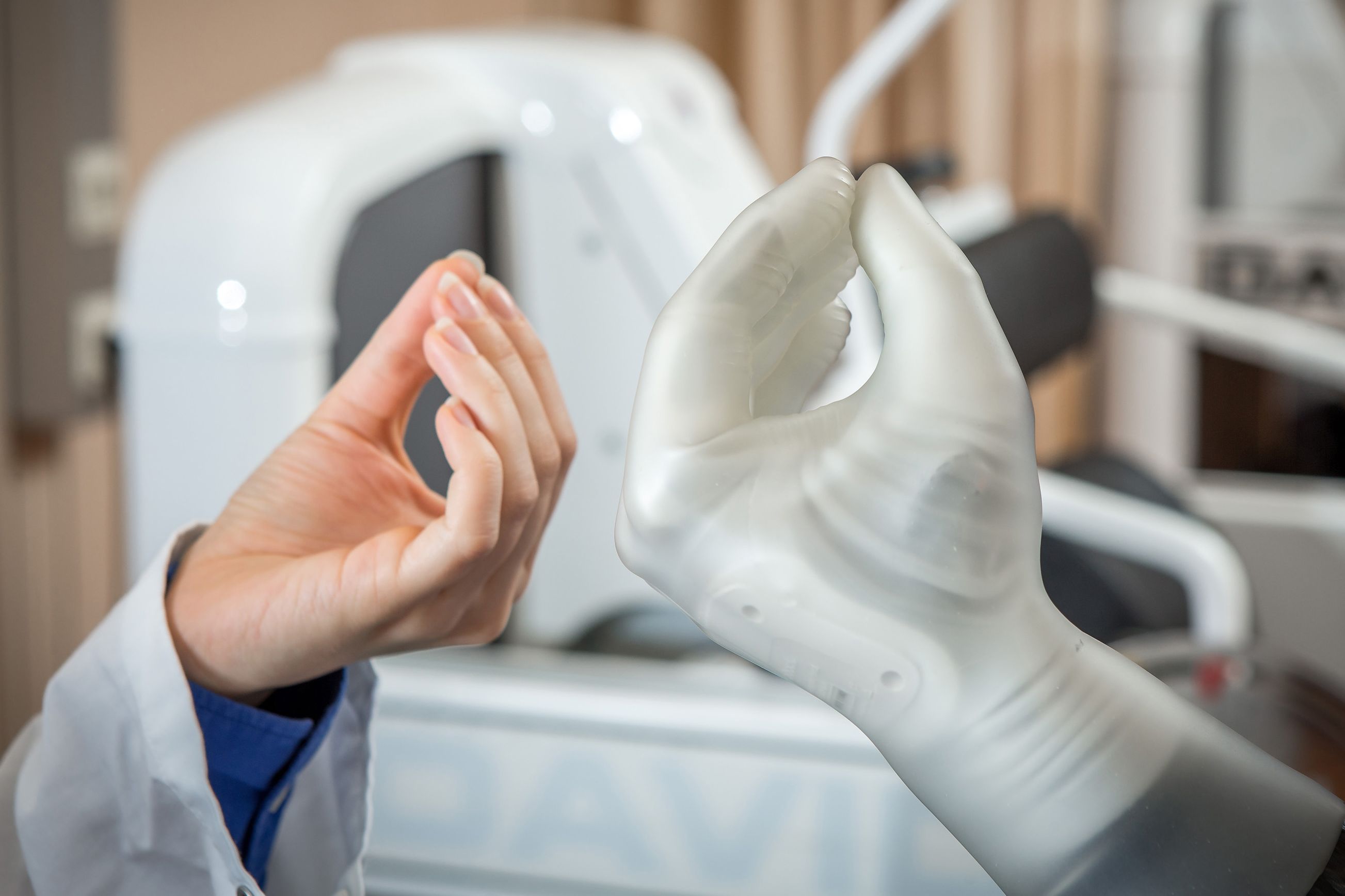
(Vienna, 6 February 2017) A Research group headed by Oskar Aszmann from MedUni Vienna's Department of Surgery, working with Dario Farina from the Department of Bioengineering at Imperial College, London, has managed to decode the "language of movement control". In a series of experiments using high-resolution electromyography (EMG), an electrophysiological technique used in neurological diagnostics, the group has identified the impulse pattern of individual motor units and translated them for the purposes of bionic movement control. Says Aszmann: "For the first time, the combination of cognitive nerve transfer with the signal decoding outlined here has made it possible to develop intuitive control algorithms with unprecedented freedom of movement."
Natural movements of the human body involve a multiplicity of nerve fibres. The neural plexus of the human arm comprises approximately 350,000 nerve fibres, which are responsible for the complex movements of the arm and hand. Aszmann: "If you lose an arm, you lose the hardware, as it were, but the control software and cables are still there." The aim of these experiments was to decode this information and to translate it into control signals in the bionic reconstruction.
Complex neurosurgical procedures were performed on six patients who had lost an arm, in order to create a "bioscreen" to make motion signals visible again. So far, it has not been possible to decode these raw signals any further so that only a limited number of movements can be replicated by the prosthesis.
Now, with specially developed sensor technology, it has been possible to identify the language of individual motor units and create an accurate map for certain movements. In the last part of the experiment, the researchers were able to show that these signals allow highly reliable intuitive movement control with a hitherto unprecedented freedom of movement.
Lead investigator Aszmann, who has been working on the reconstruction of complex limb defects for decades now, sees this work as the foundation for important developments in the field of neurobionics: For the first time we have succeeded in translating this wealth of information into effective control technology. However, ongoing experiments show that there is still a lot of untapped potential and that we will see a huge amount of innovation at the man-machine interface over the next few years.
Service: Nature Biomedical Engineering
"Man/machine interface based on the discharge timings of spinal motor neurons after targeted muscle reinnervation" Nature Biomedical Engineering, February 6, 2017. Dario Farina, Ivan Vujaklija, Massimo Sartori, Tamas Kapelner, Francesco Negro, Ning Jiang, Konstantin Bergmeister, Arash Andalib, Jose Principe, and Oskar C Aszmann.
DOI: 10.1038/s41551-016-0025.
This study was financed by the ERC Advanced Grant DEMOVE (D.F. contract #: 267888), by the Christian Doppler Research Association of the Austrian Federal Ministry for Science, Research and Economic Affairs, the EU Horizon 2020 Research and Innovation Programme (Marie Curie Grant: 702491) and by DARPA Haptix (N66001-15-1-4054).